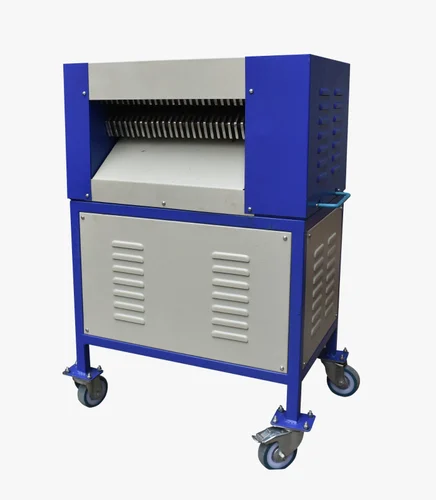In today’s fast-paced digital world, the importance of data security and confidentiality cannot be overstated. For both businesses and individuals, safeguarding sensitive information has become a top priority. One crucial tool that has played a significant role in this endeavor is the industrial paper shredding machine. This ingenious invention has revolutionized the way we dispose of paper documents, ensuring that sensitive data remains protected. In this article, we will explore the evolution, features, and impact of industrial paper shredding machines, highlighting their role in data security. Paper shredders have come a long way since their inception. The idea of shredding documents to protect sensitive information dates back to the early 20th century. Initially, shredding was a manual and time-consuming task. However, industrial paper shredding machines as we know them today began to take shape in the late 20th century. These machines started as large, noisy, and slow devices, used in government agencies and large corporations. With advancements in technology and manufacturing processes, industrial shredders became efficient, and accessible to a broader range of organizations.
Modern industrial paper shredding machines are a far cry from their early counterparts. They offer a range of features and capabilities that make them indispensable tools in the quest for data security. Some of the key features include:
High Capacity – Industrial paper shredders can handle a large volume of documents at once, often capable of shredding thousands of pages per hour. This level of efficiency is crucial for organizations with substantial document disposal needs.
Cross-Cutting Technology – Instead of merely cutting documents into strips, modern shredders employ cross-cutting technology that reduces paper into tiny, confetti-like pieces. This ensures a higher level of security, as it is extremely difficult to piece together the shredded documents.
Auto-Feed Mechanism – Many industrial shredders come equipped with automatic feed systems, reducing the need for manual paper feeding. This increases productivity and saves time.

Jam Prevention – These machines are equipped with sensors to detect and prevent paper jams, which can be a common issue with lower-quality shredders. This ensures a smoother and more reliable operation.
High Security Levels – Industrial paper shredders offer different security levels, categorized by DIN P-1 to P-7, with P-7 providing the highest level of security. Organizations can choose the appropriate security level based on their data sensitivity.
The advent of industrial paper shredding machines has had a profound impact on data security in several ways:
Preventing Data Breaches – Shredding sensitive documents ensures that confidential information does not fall into the wrong hands, reducing the risk of data breaches.
Compliance with Regulations – Many industries and organizations are subject to strict regulations concerning data protection and disposal. Industrial shredders help them meet these compliance requirements.
Cost-Efficiency – While the initial investment in industrial shredding machine may be substantial, it ultimately saves money by reducing the need for costly off-site document destruction services.
Environmental Benefits – Many modern shredders are designed with environmental concerns in mind. They often have features like energy-efficient modes and recycling bins for the shredded paper, promoting sustainability. As the importance of data security continues to grow, the role of industrial paper shredding machines in safeguarding information remains as vital as ever.
